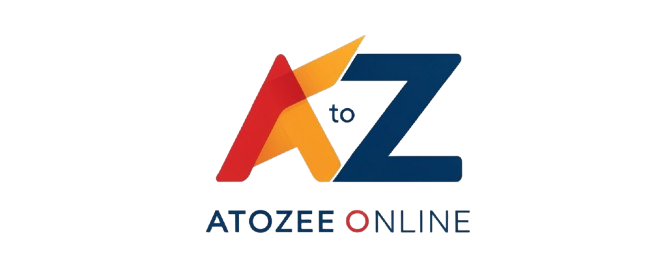Biden Student Loan

Biden Student Loan
Introduction:
- The landscape of student loans in the United States has been a subject of constant evolution, and the Biden administration is making substantial strides in addressing the challenges associated with it. In this article, we will embark on a comprehensive exploration of President Biden’s student loan plan.
- As we navigate through the intricacies of this policy, we’ll uncover its key features, scrutinize critics’ perspectives, assess the benefits for students, and analyze the potential impact on the economy. Understanding the nuances of this plan is crucial in deciphering its implications for current and future generations of students. So, let’s dive into the realm of education finance and unpack the facets of Biden’s vision for a more accessible and equitable higher education system.
- Biden’s Student Loan Plan:
In recent years, the issue of student loans has become a prominent focal point in political discourse, and President Biden’s administration is taking proactive steps to reshape the narrative. This article will delve into the heart of Biden’s student loan plan, exploring its key features, addressing critics’ perspectives, examining the benefits for students, and evaluating its potential impact on the economy. - Understanding Biden’s Vision:
President Biden’s vision for student loans is grounded in the fundamental belief that education should be accessible and affordable for all. The multifaceted plan aims to alleviate the financial burden on students, providing them with the support needed to pursue higher education without being hindered by crippling debt.

Key Features of the Plan:
A cornerstone of Biden’s approach involves significant changes to interest rates. This move is designed to ease the strain on borrowers, making the prospect of education financing more manageable. Additionally, the administration is introducing innovative loan forgiveness programs and expanding income-driven repayment options, offering a lifeline to those navigating the complexities of repayment.
- Critics’ Perspectives: Navigating Controversies;
While the plan has garnered support for its progressive initiatives, it has not been without its fair share of criticism. Detractors argue that the proposed changes might have adverse economic consequences, and concerns have been raised about the feasibility of implementing such extensive reforms. Navigating these controversies will be crucial for the administration in ensuring the plan’s success. - Impact on Students: A Closer Look;
For current and prospective students, Biden’s plan carries significant implications. The increased access to higher education and the potential reduction of financial barriers offer a ray of hope. However, challenges persist, and the administration must navigate various obstacles to implement these sweeping changes effectively. - Challenges for the Administration;
Implementing such a comprehensive plan is not without its hurdles. Political resistance and financial constraints pose challenges that the administration must address to ensure the plan’s success. Striking a delicate balance between policy goals and real-world constraints requires strategic decision-making and a nuanced approach. - Comparisons with Previous Policies: Lessons from the Past;
To gauge the potential outcomes of Biden’s plan, it’s crucial to compare it with the approaches of previous administrations. Examining historical attempts to tackle the student loan crisis provides valuable insights into what has worked and what pitfalls to avoid. This historical context is essential for understanding the trajectory of the current plan. - Beyond Borders: International Perspectives;
Taking a step back, let’s consider how the United States compares to other countries in addressing student loans. Analyzing global perspectives sheds light on alternative models and potential lessons that can be learned from international experiences. This broader perspective is instrumental in shaping effective and sustainable policies. - Impact on the Economy: Unraveling the Consequences;
The ripple effect of student loan policies extends beyond individual borrowers. We explore the potential economic implications, weighing the long-term benefits against possible drawbacks and assessing how these changes might shape the nation’s economic landscape. Balancing the needs of individuals with broader economic considerations is a delicate task. - Public Reaction: The Social Discourse;
In the age of social media, public sentiment plays a crucial role. Tracking the online discourse surrounding Biden’s student loan plan provides valuable insights into how the public perceives these changes and the conversations shaping the narrative. Public engagement is a key factor in the success and sustainability of any policy. - Navigating the Future: Practical Advice for Borrowers;
As the student loan landscape evolves, students must navigate the application process under the new system. This section offers a practical guide for borrowers, outlining the steps to take and resources to consult when dealing with the revamped loan programs. Empowering students with the information they need is essential for the success of the plan. - Success Metrics: Measuring the Plan’s Impact;
How will we know if Biden’s plan succeeds? This section explores the metrics that will be used to measure the plan’s effectiveness and the benchmarks against which its success will be evaluated. Establishing clear success metrics is crucial for accountability and continual improvement. - Financial Planning Tips for Students: Securing Your Future;
For students considering loans, effective financial planning is essential. This section provides actionable advice on budgeting, managing debt, and making informed decisions about education financing. Empowering students with financial literacy is a key component of the broader vision for a more equitable education system.
Key Features of Biden’s Student Loan Plan:
As we delve into the specifics of President Biden’s student loan plan, it becomes evident that the proposed changes are not mere tweaks but a comprehensive overhaul aimed at alleviating the financial burden on borrowers. Let’s dissect the key features that define this transformative plan.
- Interest Rate Reforms:
A pivotal aspect of Biden’s plan revolves around significant changes to interest rates. The administration recognizes that high-interest rates have been a major contributor to the growing student debt crisis. The proposed reforms aim to lower these rates, making the cost of borrowing more manageable for students. This move not only reduces the financial strain on current borrowers but also encourages more individuals to pursue higher education without the fear of exorbitant interest accumulating. - Loan Forgiveness Programs:
One of the most talked-about elements of the plan is the introduction of innovative loan forgiveness programs. The administration acknowledges that many borrowers, despite their best efforts, find themselves drowning in student debt. To address this, specific provisions for loan forgiveness based on certain criteria are being incorporated. This aspect of the plan offers a lifeline to those who have faced challenges in repaying their loans, providing a pathway to financial relief. - Expansion of Income-Driven Repayment Options:
Recognizing the diverse financial situations of borrowers, the Biden administration is expanding income-driven repayment options. This means that borrowers will have more flexibility in repaying their loans based on their income levels. This nuanced approach ensures that individuals are not burdened with unmanageable monthly payments, fostering a more inclusive and equitable system. - Targeted Support for Low-Income Borrowers:
The plan prioritizes support for low-income borrowers, aiming to bridge the gap in access to quality education. By providing targeted financial assistance and resources, the administration intends to create a more level playing field, where socio-economic status does not hinder educational pursuits. - Simplification of FAFSA (Free Application for Federal Student Aid):
Recognizing the complexities and barriers associated with the FAFSA process, Biden’s plan includes measures to simplify the application. This streamlining not only makes it easier for students to access financial aid but also ensures that they are fully aware of the support available to them, reducing the likelihood of accumulating unnecessary debt. - Extension of Public Service Loan Forgiveness:
Acknowledging the contributions of those in public service roles, the plan extends support through the Public Service Loan Forgiveness program. This move incentivizes individuals to pursue careers in public service by providing a clear path to loan forgiveness, recognizing the societal value of such roles. - Incorporation of Technology for Efficient Loan Management:
Biden’s plan embraces technology to streamline and enhance the loan management process. By leveraging technological solutions, the administration aims to make it easier for borrowers to navigate their loans, access information, and stay informed about their repayment options. - Collaboration with States for Tuition-Free Community College:
In a bid to make higher education more accessible, the plan includes provisions for collaboration with states to make community college tuition-free. This initiative aligns with the broader vision of creating equal opportunities for education and reducing the financial barriers faced by students. - Support for Historically Black Colleges and Universities (HBCUs) and Minority-Serving Institutions (MSIs):
Acknowledging the importance of HBCUs and MSIs in providing education to historically marginalized communities, the plan includes targeted support to strengthen these institutions. This not only ensures the continued existence of these vital educational hubs but also enhances educational opportunities for minority students. - Enhanced Protections for Borrowers:
Biden’s plan incorporates measures to enhance protections for borrowers, safeguarding them from predatory practices and ensuring fair treatment in the lending process. These enhanced protections contribute to creating a more transparent and accountable student loan system.
Perspectives on Biden’s Student Loan Plan:
As with any sweeping policy change, President Biden’s student loan plan has not been immune to criticism. It’s crucial to explore the diverse perspectives and concerns raised by critics, as this scrutiny contributes to a more comprehensive understanding of the plan’s potential implications and challenges.
- Economic Feasibility:
One prominent criticism centers around the economic feasibility of implementing such an extensive student loan plan. Skeptics argue that the proposed changes, including interest rate reductions and loan forgiveness programs, could strain the nation’s finances. Questions arise about how the government plans to fund these initiatives without negatively impacting other crucial sectors. - Impact on Taxpayers:
Critics express concern about the potential impact on taxpayers. As the government explores avenues to alleviate the burden on borrowers, questions emerge about who will ultimately foot the bill. The fear is that redistributing the financial responsibility may place an additional strain on taxpayers, creating an unintended consequence. - Moral Hazard and Future Borrowing Behavior:
A more nuanced criticism revolves around the concept of moral hazard. Some argue that extensive loan forgiveness programs may incentivize irresponsible borrowing behavior in the future. Critics express concerns that if individuals believe their loans will be forgiven, they may be less inclined to make informed and responsible decisions about their borrowing habits. - Equality and Fairness Concerns:
While Biden’s plan emphasizes support for low-income borrowers, critics question the potential unintended consequences. Some argue that the plan may not adequately address the needs of middle-income borrowers who may still face financial challenges but are not eligible for certain assistance programs. - Potential Market Distortions:
Skeptics also raise concerns about the potential market distortions that could result from the government’s extensive involvement in the student loan landscape. The fear is that significant intervention may disrupt the natural market forces and lead to unintended consequences for both borrowers and lenders. - Political Resistance and Implementation Challenges:
Implementing a comprehensive student loan plan involves navigating complex political landscapes. Critics highlight the potential for resistance from various political factions, which could impede the smooth execution of the proposed reforms. Overcoming political hurdles is a substantial challenge that the administration must address for the plan to succeed. - Long-Term Economic Impact:
Critics express concerns about the long-term economic impact of Biden’s student loan plan. While the short-term benefits may be apparent, questions linger about the sustainability of the proposed changes and their potential effects on the broader economy over an extended period. - Effectiveness of Loan Forgiveness Programs:
The efficacy of loan forgiveness programs is a focal point of criticism. Some argue that the criteria for loan forgiveness may not be clear or fair, potentially leaving certain groups of borrowers without the relief they need. Ensuring that forgiveness programs are targeted and effective is a critical aspect that needs careful consideration. - Potential for Increased Tuition Costs:
A common concern among critics is the potential for increased tuition costs as a result of the government’s involvement in providing tuition-free community college. Skeptics argue that if colleges know that tuition is covered, they may be inclined to raise prices, creating a cycle that counteracts the intended goal of reducing financial barriers for students.

Benefits for Students:
As we dissect President Biden’s student loan plan, it’s crucial to shine a spotlight on the positive changes it brings, particularly for students. The plan is designed not only to address the challenges faced by current borrowers but also to pave the way for a more inclusive and accessible higher education system. Let’s explore the benefits that students stand to gain from this transformative policy.
- Reduced Financial Strain on Current Borrowers:
One of the immediate benefits of Biden’s plan is the reduction of financial strain on current borrowers. By implementing changes to interest rates, the administration aims to make monthly payments more manageable, providing relief to those already navigating the complexities of student loan repayment. - Innovative Loan Forgiveness Programs:
The introduction of innovative loan forgiveness programs is a beacon of hope for many students facing the burden of substantial debt. This aspect of the plan acknowledges the challenges that borrowers may encounter and offers a pathway to financial relief, allowing individuals to focus on their education and career goals without the looming specter of overwhelming debt. - Flexible Income-Driven Repayment Options:
Expanding income-driven repayment options is a game-changer for students with varying financial situations. This flexibility ensures that graduates entering the workforce have the ability to tailor their repayment plans based on their income, preventing them from being shackled by unmanageable monthly payments. - Increased Access to Higher Education:
Biden’s plan includes provisions for making community college tuition-free, opening doors for students who may have otherwise been deterred by financial barriers. This increased access to higher education aligns with the broader goal of creating a more educated and skilled workforce, driving economic growth and innovation. - Support for Low-Income Borrowers:
The targeted support for low-income borrowers is a testament to the administration’s commitment to equity. By prioritizing financial assistance for those who need it most, Biden’s plan aims to level the playing field, ensuring that all students, regardless of their socio-economic background, have the opportunity to pursue and complete their education. - Streamlined FAFSA Process:
Simplifying the FAFSA process is a direct response to the challenges students face in accessing financial aid. The streamlined application process ensures that students can more easily navigate the financial aid landscape, reducing the administrative hurdles that may have discouraged some from pursuing higher education. - Extended Public Service Loan Forgiveness:
The extension of support through the Public Service Loan Forgiveness program is a boon for students aspiring to contribute to public service roles. This initiative recognizes the value of such roles in society and provides a clear path to loan forgiveness, incentivizing individuals to pursue careers that benefit the broader community. - Technology for Efficient Loan Management:
The incorporation of technology for efficient loan management empowers students to take control of their financial journey. By leveraging technological solutions, the plan ensures that borrowers have easy access to information, resources, and tools that facilitate informed decision-making and effective loan management. - Collaboration with States for Tuition-Free Community College:
The collaboration with states for tuition-free community college is a transformative step toward making higher education more accessible. This benefit not only reduces the financial burden on students but also fosters a culture of continuous learning and skill development. - Support for Historically Black Colleges and Universities (HBCUs) and Minority-Serving Institutions (MSIs):
The targeted support for HBCUs and MSIs enhances educational opportunities for minority students. By strengthening these institutions, the plan ensures that students from historically marginalized communities have access to quality education, contributing to a more diverse and inclusive higher education landscape.
Challenges for the Administration:
While President Biden’s student loan plan holds promise for transformative change, its successful implementation is not without its set of challenges. As the administration strives to enact these sweeping reforms, it must grapple with various hurdles that could impact the plan’s effectiveness. Let’s delve into the challenges that the administration faces in navigating the complexities of Biden’s student loan plan.
- Political Resistance:
One of the foremost challenges for the administration is potential political resistance. The student loan landscape is inherently political, with differing opinions on how to address the crisis. Overcoming resistance from various political factions is essential for the smooth implementation of the plan and requires strategic negotiation and bipartisan collaboration. - Financial Constraints:
Implementing a comprehensive student loan plan involves substantial financial commitments. The administration must carefully navigate budgetary constraints and allocate resources effectively to fund the proposed changes. Balancing the financial implications with the long-term benefits is a delicate task that requires prudent fiscal management.
- Public Perception and Communication:
The success of the plan is closely tied to public perception. The administration must effectively communicate the goals and benefits of the student loan plan to the public, addressing concerns and dispelling misinformation. Building and maintaining public support is critical for the sustained success of the policy.
- Implementation Logistics:
The sheer complexity of implementing the proposed changes poses a significant logistical challenge. Streamlining processes, updating systems, and ensuring that the changes are applied uniformly and efficiently across various institutions and programs require meticulous planning and execution.
- Resistance from Lenders and Financial Institutions:
Lenders and financial institutions that are deeply entrenched in the current student loan system may resist the proposed changes. The administration must navigate negotiations and potential pushback from these entities to ensure a smooth transition to the new framework.
- Ensuring Equitable Implementation:
One of the core tenets of Biden’s plan is equity. Ensuring that the benefits of the plan are distributed equitably among diverse groups of students is a substantial challenge. The administration must develop mechanisms to prevent unintended disparities in the distribution of support and resources.
- Navigating Legal Challenges:
Legal challenges may arise from various stakeholders, including states, institutions, or interest groups. The administration must anticipate potential legal hurdles and work to address them proactively, ensuring that the plan remains resilient in the face of legal scrutiny. - Adapting to Unforeseen Circumstances:
The unpredictable nature of global events and economic fluctuations adds an element of uncertainty to the plan’s implementation. The administration must be agile and ready to adapt the plan to unforeseen circumstances, ensuring its resilience in the face of external challenges. - Coordination with States and Educational Institutions:
Collaboration with states and educational institutions is crucial for the success of certain aspects of the plan, such as making community college tuition-free. Coordinating efforts, aligning goals, and addressing the unique needs of different regions require effective communication and collaboration. - Monitoring and Evaluation:
Establishing effective mechanisms for monitoring and evaluating the plan’s impact is essential. The administration must develop robust metrics to assess the effectiveness of the changes, allowing for continuous improvement and adjustment based on real-world outcomes.
Impact on the Economy:
President Biden’s student loan plan extends beyond individual borrowers, with potential repercussions that ripple through the broader economic landscape. Understanding how these changes may impact the economy is crucial for assessing the plan’s overall efficacy and long-term implications. Let’s delve into the multifaceted impact of Biden’s student loan plan on the economic front.
- Stimulating Consumer Spending:
As borrowers experience relief from reduced monthly payments and debt forgiveness, a surge in disposable income may follow. This could stimulate consumer spending, a key driver of economic growth. Increased spending on goods and services may contribute to a more robust and dynamic economy. - Boosting Homeownership Rates:
Lower student loan burdens may enhance the ability of graduates to qualify for mortgages and engage in homeownership. A surge in the housing market can have cascading effects, generating economic activity in sectors related to real estate, construction, and home improvement. - Fostering Entrepreneurship and Small Business Growth:
With diminished student debt concerns, individuals may be more inclined to pursue entrepreneurial ventures. This surge in entrepreneurship can fuel small business growth, a vital component of the economy. New businesses contribute to job creation, innovation, and increased competition, fostering a dynamic economic environment. - Addressing Workforce Participation and Productivity:
Reduced financial burdens on graduates may allow them to make career choices based on passion and long-term goals rather than immediate financial necessities. This could positively impact workforce participation and productivity, contributing to a more skilled and engaged workforce. - Mitigating the Risk of a Student Debt Crisis:
The student debt crisis poses a potential threat to the economy. By addressing this crisis through comprehensive reforms, Biden’s plan mitigates the risk of a widespread default scenario that could have severe economic consequences. Averted defaults contribute to a more stable financial system. - Balancing Fiscal Responsibility:
While the plan aims to alleviate the burden on borrowers, there are concerns about the fiscal responsibility of implementing such extensive changes. Striking a balance between providing relief and maintaining fiscal discipline is crucial to prevent unintended economic consequences. - Impacting Higher Education Institutions:
Changes in student loan policies can influence higher education institutions. The potential for tuition-free community college may alter the financial dynamics of educational institutions, requiring them to adapt and innovate to sustain their operations. - Income Inequality and Social Mobility:
Reducing financial barriers to education can contribute to enhanced social mobility, allowing individuals from diverse socio-economic backgrounds to access higher education. However, the impact on income inequality needs careful monitoring to ensure that the plan achieves its goals without inadvertently exacerbating disparities. - Potential Market Distortions:
Extensive government intervention in the student loan landscape may introduce market distortions. Balancing intervention with market forces is essential to prevent unintended consequences that could impact the efficiency and sustainability of the student loan system - Aligning with Long-Term Economic Goals:
Assessing the plan’s impact requires consideration of its alignment with long-term economic goals. The administration must ensure that the changes contribute to a resilient and sustainable economic future, avoiding short-term gains at the expense of broader economic stability.
Shaping the Future of Education Finance:
In the intricate dance of policy, politics, and personal finance, President Biden’s student loan plan emerges as a significant player, holding the promise of reshaping the future of education finance in the United States. As we conclude our exploration of this transformative policy, it’s essential to reflect on the key aspects, challenges, and potential impacts that define this ambitious plan.
- Navigating Complexities:
The student loan plan navigates a complex web of challenges, from political resistance and financial constraints to the intricacies of implementation logistics. The administration faces the formidable task of steering through these challenges with finesse, adapting to unforeseen circumstances, and maintaining a delicate balance to achieve the plan’s objectives. - Balancing Act of Benefits and Challenge:
While the plan brings forth a myriad of benefits for students, such as reduced financial strain, innovative forgiveness programs, and increased access to education, it is not without its share of critics and challenges. Striking a balance between providing relief for borrowers and addressing concerns raised by skeptics is a crucial aspect of the plan’s success. - Economic Ripple Effects:
The economic impact of Biden’s student loan plan extends beyond individual borrowers. From stimulating consumer spending to fostering entrepreneurship and addressing the looming threat of a student debt crisis, the plan’s consequences reverberate through various sectors, shaping the economic landscape for years to come. - Shaping a More Equitable Future:
At its core, the plan aspires to create a more equitable future in education finance. By providing targeted support for low-income borrowers, streamlining processes, and enhancing access to higher education, the administration seeks to level the playing field and foster an environment where education is a pathway to success, unencumbered by the weight of insurmountable debt. - The Road Ahead:
As we stand at the crossroads of policy implementation and societal impact, the road ahead is both promising and challenging. The success of Biden’s student loan plan hinges on effective communication, adept navigation of political landscapes, and a commitment to monitoring, evaluating, and adapting to ensure the plan’s continued relevance and success.
Conclusion:
In conclusion, President Biden’s student loan plan is a bold step toward addressing the complexities and challenges woven into the fabric of education finance. It signals a commitment to creating a future where education is a beacon of opportunity, unburdened by financial hardship. As the plan unfolds and its impact becomes more pronounced, the nation watches closely, hopeful for a future where the pursuit of knowledge is truly within reach for all.
Frequently Asked Questions (FAQs)
Q: What specific changes does Biden’s student loan plan propose for interest rates?
A: The plan aims to lower interest rates, addressing the issue of high rates contributing to the student debt crisis. Lower rates will make the cost of borrowing more manageable for students.
Q: How does the plan address the concerns of low-income borrowers?
A: Biden’s plan prioritizes support for low-income borrowers through targeted financial assistance and resources, aiming to create a more equitable education system.
Q: Will the streamlining of the FAFSA process make it easier for students to access financial aid?
A: Yes, simplifying the Free Application for Federal Student Aid (FAFSA) process is part of the plan. The goal is to reduce barriers and make it easier for students to access the financial aid they need.
Q: What is the significance of the extension of Public Service Loan Forgiveness in the plan?
A: The extension encourages individuals to pursue public service careers by providing a clear path to loan forgiveness, recognizing the societal value of such roles.
Q: How does the plan address the concerns about potential market distortions?
A: While the plan involves significant government intervention, efforts will be made to balance intervention with market forces, aiming to prevent unintended consequences in the student loan system.
Q: What role does technology play in Biden’s student loan plan?
A: The plan incorporates technology to enhance loan management, making it easier for borrowers to navigate their loans, access information, and stay informed about their repayment options.
Q: How does the plan impact historically Black Colleges and Universities (HBCUs) and Minority-Serving Institutions (MSIs)?
A: The plan includes targeted support to strengthen HBCUs and MSIs, aiming to enhance educational opportunities for minority students and contribute to a more diverse and inclusive higher education landscape.
Q: Will the plan result in increased tuition costs for higher education institutions?
A: There are concerns about potential increased tuition costs, especially with the provision for collaboration with states to make community college tuition-free. However, the long-term effects on tuition costs remain to be seen.
Q: How does the plan address concerns about moral hazard in borrowing behavior?
A: The plan introduces innovative loan forgiveness programs based on specific criteria. While providing relief, the criteria aim to discourage irresponsible borrowing behavior by ensuring that forgiveness is not automatic.
Q: How can individuals stay informed about the changes in student loan policies under Biden’s plan?
A: Individuals can stay informed by regularly checking official government websites, attending informational sessions, and consulting with financial aid advisors who can provide up-to-date information on policy changes and their implications.






